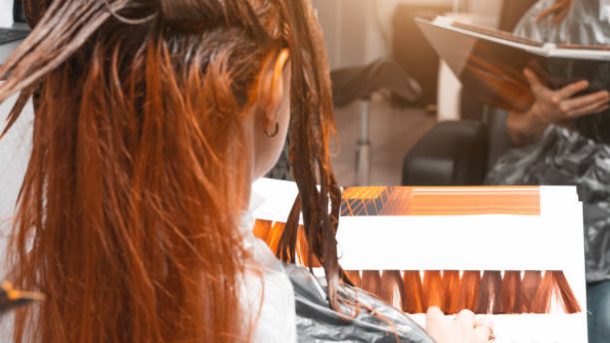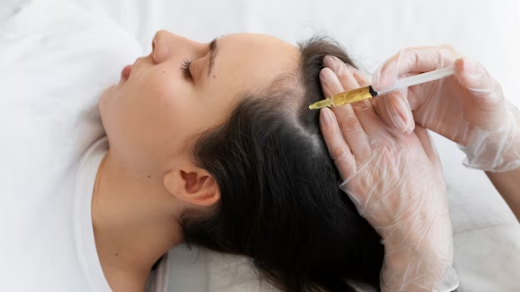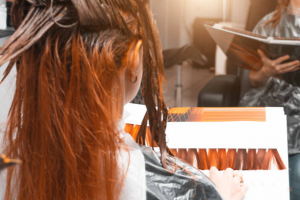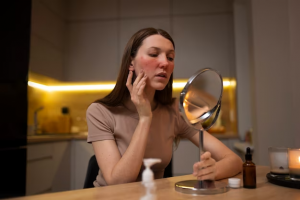When it comes to personal style and aesthetics, hair is one of the most noticeable characteristics we possess. Altering the texture of your natural hair can be a way to express your individuality or to refresh your look. This article aims to delve into how one could help shift the texture of their natural hair, be it to enhance its natural beauty, add texture, or simply experiment with a new look. We’ll explore hair care methods that use natural oils, hydration, mechanical manipulations, and even chemical treatments – all with the goal of achieving the desired hair transformation in a healthy manner.
Understanding Hair Texture and Types
Every hair strand has its unique pattern, influenced by genetics and several environmental factors. The texture of your hair is determined by the shape of the follicle that your hair grows out of – a perfectly round follicle will produce straight hair, whereas an oval or irregularly shaped one often yields wavy or curly hair. Understanding this can also be crucial for adopting hair care products and routines that are suitable for your hair type. Let’s break down the basics.

The Science Behind Hair Texture
- Hair texture refers to the thickness or diameter of the individual hair strand. Generally, hair can be classified as fine, medium, or thick.
- Besides the thickness, the shape of the hair strand – straight, wavy, curly, or kinky – also defines its texture.
The health of your scalp plays a pivotal role in hair growth and texture. Natural oils produced by the scalp, like sebum, are vital for keeping hair soft and enhancing its natural color. By maintaining a proper balance of these oils and ensuring your scalp is healthy, you can keep your hair’s texture naturally glossy and robust.
Identifying Your Hair Type
| Hair Type | Characteristics | Care Tips |
|---|---|---|
| Type 1 (Straight) | Lies flat from roots to tips | Use lighter care products; avoid heavy oils |
| Type 2 (Wavy) | S-shaped pattern; less oily than type 1 | Use products that enhance waves and add volume |
| Type 3 (Curly) | Defined ringlets; drier texture | Hydration is key; look for products with natural oils |
| Type 4 (Kinky) | Tight curls; fragile strands | Moisturize regularly; minimize manipulation |
Developing a Hair Care Regimen for Textural Change
To change your hair’s texture, you may need to alter your hair care routine to accommodate new practices that will help encourage the desired change. Certain natural ways of changing hair texture revolve around diet, hair care products, and scalp treatments that promote hair health.
Importance of a Customized Hair Care Plan
Just as you would tailor a diet to suit nutritional needs or curate a wardrobe to flatter your shape, your hair care should be customized too. This includes understanding the peculiarities of your hair – its texture, porosity, and natural color – to choose the right products and techniques. This customization also helps prevent damage that could arise from using unsuitable treatments.
Natural Oils and Hydration for Texture Transformation
Consistent hydration, both internal by drinking plenty of water, and external via moisturizing products, will help maintain hair health and vitality. Natural ways to change hair texture also include the use of natural oils, which can penetrate the hair shaft and reduce frizz, adding smoothness and shine. For instance, coconut oil not only hydrates but also helps protect the hair against protein loss. Similarly, argan oil, rich in antioxidants and vitamin E, could help improve hair’s flexibility and reduce roughness.
Mechanical Methods to Alter Hair Texture
Changing the texture of your hair doesn’t always require drastic measures. There are mechanical methods that, while temporary, can also have a long-lasting effect if used consistently over time. These methods typically involve manipulating the hair into shapes and patterns that, when released, give a different texture and appearance to the hair.
Heat Styling Tools
The use of heat styling tools is one of the most common approaches to altering hair texture. For instance, flat irons or straighteners can transform curly or wavy hair into a sleek, straight look. Similarly, curling wands and rollers can add curls or waves to straight hair. It’s important to use these tools judiciously and always with a heat protectant product to prevent damage:
- Always select the lowest effective temperature setting on your heat tool.
- Do not use heat styling more than once a week to prevent cumulative damage to your hair.
Braiding and Twisting Techniques
Aside from heat, braiding and twisting can also add texture to the hair. These techniques do not require heat, which makes them less damaging. Braiding the hair when damp and allowing it to dry can leave the hair with waves or curls, depending on the tightness and style of the braids.
- Experiment with different braiding patterns and sizes for a variety of textures.
- Leave the braids in overnight for more pronounced and lasting texture.

Chemical Alternatives for Textural Modification
For those seeking a more permanent change in their hair texture, chemical processes could help. These treatments break and reform the chemical bonds in hair, resulting in a different texture. However, these should be approached with caution and preferably by a professional to minimize potential damage.
Relaxers and Perms
Relaxers are used to straighten curly or kinky hair, while perms add curliness or waviness to straight hair. Both processes involve the use of chemicals, which can be harsh and cause hair damage, so they should be done sparingly and always with post-treatment hair care in mind:
- Deep condition regularly after chemically altering your hair to restore moisture and elasticity.
- Schedule touch-ups only when necessary and limit overlapping treatments to prevent over-processing.
Risks and Rewards of Chemical Processes
While the immediate results of chemical texturizing can be gratifying, the long-term health of your hair could be compromised if proper care is not taken. Regular protein treatments, deep conditioning, and trims will help mitigate some of the risks associated with these processes. The reward can be a significant and lasting change in your hair’s appearance; however, it’s a decision that requires careful consideration and commitment to ongoing care.
Embracing and Enhancing Your Natural Hair Texture
Despite the numerous methods available for changing hair texture, there’s also beauty and ease in embracing your natural texture. With the right care, any hair type can look healthy and stunning.
The Benefits of Going Natural
When you work with your natural texture, you minimize the risk of damage from heat, chemicals, and over-manipulation. Natural hair care often becomes simpler, more cost-effective, and is inherently unique to you. This approach also helps with hair growth, as the less stress you put on your follicles, the healthier they can be.
Styling and Maintenance Tips for Natural Hair
There are countless ways to style natural hair to enhance its texture. Utilizing care products that suit your specific hair type, as well as incorporating natural oils into your routine, can make all the difference in your hair’s health and appearance. Whether it’s employing protective styles or finding the perfect leave-in conditioner, the key is to personalize your hair care to what works best for your hair:
- Experiment with products and styles until you find what truly suits your hair’s needs.
- Protect your hair at night with silk or satin head coverings to reduce breakage and keep styles intact.
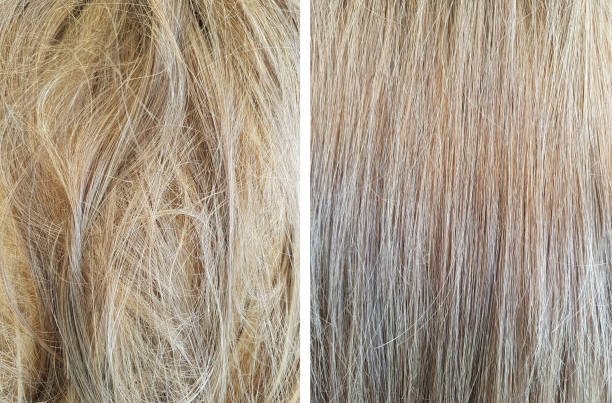
Conclusion
Understanding your hair’s natural texture and exploring various ways to care for it, alter it, or enhance it can be a rewarding journey. Whether you’re using mechanical methods like heat styling and braiding, employing chemical processes like relaxers and perms, or opting to work with your natural texture, the aim should always be to ensure the health of your hair comes first. Remember that while it’s possible to change the texture of your hair, such methods should always be approached with caution and with the priority of maintaining your hair’s health. Above all, embracing your unique hair type and finding joy in its natural form is a celebration of your individuality and can be the most effortless and fulfilling path to take.
FAQ
Q1: Can I permanently change my hair texture?
A1: Permanent changes to your hair texture typically require chemical treatments like relaxers or perms. However, these alterations are not truly “permanent” as new hair growth will continue to come in with your natural texture.
Q2: How can natural oils help change my hair texture?
A2: Natural oils can hydrate and soften the hair, making it more pliable and easy to manage. This can create a temporary change in texture, especially when used in conjunction with styling techniques.
Q3: Will cutting my hair change its texture?
A3: Cutting your hair will not change the actual texture of the hair strand, but it can affect the overall look of your hair. Removing weight from your hair can allow natural curls or waves to become more pronounced.
Q4: How often should I change my hair care products when trying to alter my hair texture?
A4: As often as needed until you find products that work well for your hair. Keep in mind that what works for one person might not work for another, so it can be a process of trial and error.
Q5: Are there any risks to using heat styling tools frequently?
A5: Frequent use of heat styling tools can lead to damage such as breakage, split ends, and a loss of natural moisture. Always use a heat protectant and try to limit heat styling to minimize these risks.
